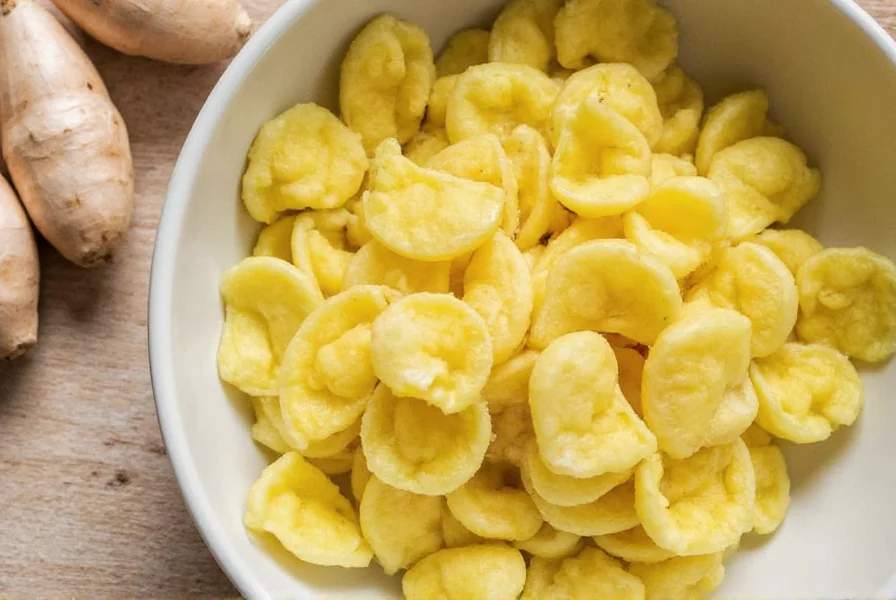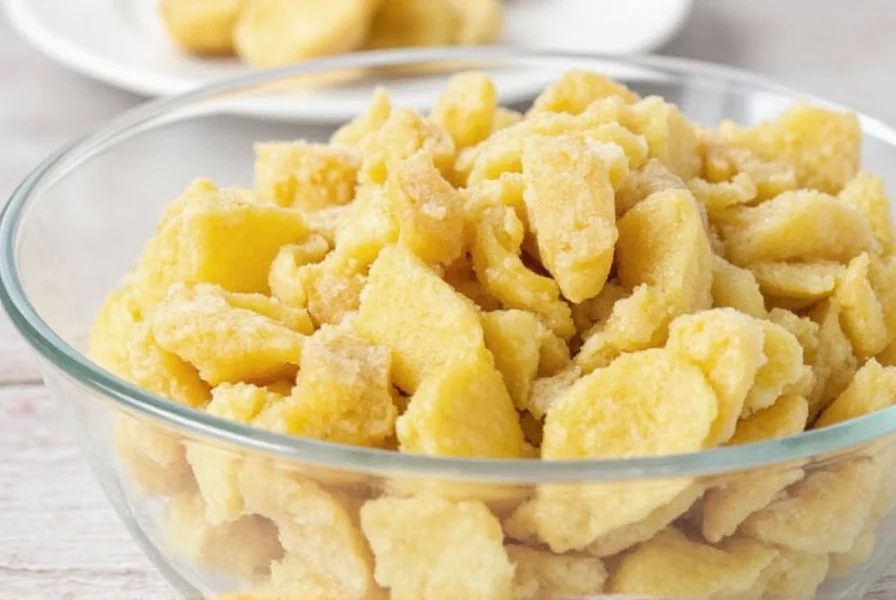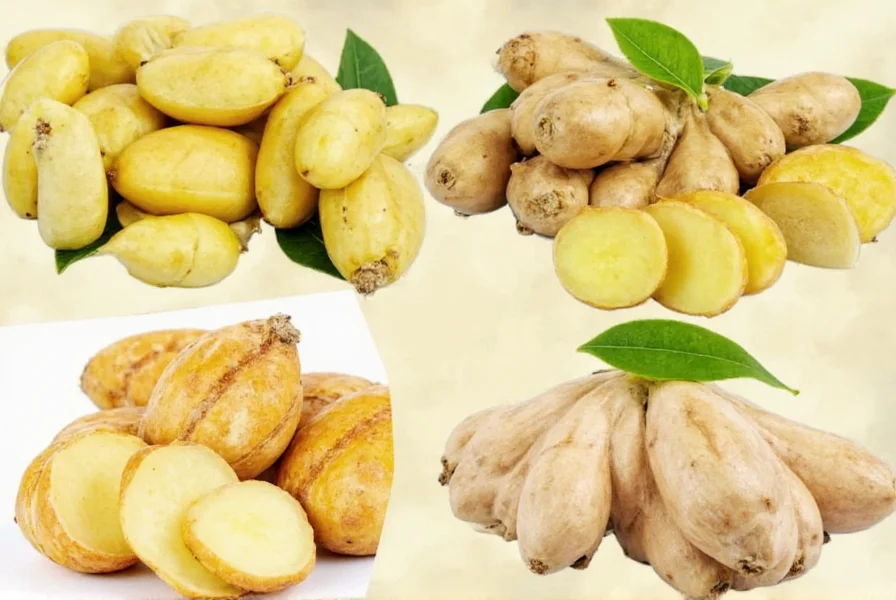When selecting ginger for cooking, the term "fat ginger" describes root sections that are thick, firm, and饱满 with moisture. These plump pieces typically come from younger ginger plants and offer the ideal texture and flavor profile for most culinary applications. Understanding how to identify and use fat ginger can significantly elevate your cooking results.
What Makes Ginger "Fat" and Why It Matters
Fat ginger gets its name from its physical appearance—thick, bulbous knobs with smooth, tight skin and minimal wrinkles. This contrasts with older, drier ginger that appears thin, fibrous, and shriveled. The plumpness indicates higher water content, which translates to:
- More intense, fresher flavor profile
- Less fibrous texture when grated or sliced
- Greater yield when preparing recipes
- Longer shelf life before spoiling
Chefs prefer fat ginger because it contains optimal levels of gingerol, the compound responsible for ginger's characteristic heat and health benefits. As ginger ages and loses moisture, these compounds degrade, resulting in less flavorful and more fibrous root.

Selecting the Best Fat Ginger at Market
When shopping for high-quality fat ginger, look for these specific characteristics:
| Quality Indicator | Fat Ginger Characteristics | Lower Quality Signs |
|---|---|---|
| Appearance | Plump, firm knobs with smooth skin | Thin, stringy pieces with deep wrinkles |
| Texture | Firm to touch with slight bounce | Soft spots or excessive hardness |
| Color | Bright tan to light brown | Dull, darkened, or greenish patches |
| Moisture | Minimal dryness, no shriveling | Visible dryness or shriveled appearance |
The best fat ginger feels heavy for its size, indicating high water content. Run your fingers along the skin—it should feel smooth and tight, not loose or papery. Avoid pieces with soft spots, mold, or visible sprouting, as these indicate aging or improper storage.
Culinary Applications of Fat Ginger
Fat ginger's superior moisture content makes it versatile across cooking techniques:
- Raw applications: Ideal for grating into dressings, marinades, and fresh sauces where fibrous texture would be noticeable
- Stir-frying: Releases flavor quickly without burning due to optimal moisture balance
- Baking: Provides consistent flavor distribution in doughs and batters
- Beverages: Yields more potent ginger juice with less effort when pressed
- Pickling: Maintains better texture and absorbs flavors more effectively
For Asian cuisine specifically, fat ginger works best in dishes requiring fresh ginger flavor without excessive fibrousness. Thin, mature ginger often works better for pickling or when you want a more concentrated, less moist ginger flavor.

Proper Storage Techniques for Maximum Freshness
To maintain your fat ginger's quality, follow these storage guidelines:
- Refrigeration: Store unpeeled ginger in an airtight container with a paper towel to absorb excess moisture
- Freezing: Freeze whole or sliced ginger in freezer bags—no need to thaw before use
- Vacuum sealing: Extends shelf life up to 6 months when properly sealed
- Submersion: Store in sherry or vodka to preserve flavor for up to 3 months
Never store ginger at room temperature for extended periods, as it will quickly lose moisture and develop mold. Properly stored fat ginger maintains peak quality for 3-4 weeks in the refrigerator and up to 6 months in the freezer.
Nutritional Profile and Health Benefits
Fat ginger contains higher concentrations of beneficial compounds due to its freshness and moisture content:
- Rich in gingerols and shogaols with potent anti-inflammatory properties
- Higher vitamin C and magnesium content than aged ginger
- Contains digestive enzymes that aid nutrient absorption
- Provides natural antioxidants that combat oxidative stress
Research shows that fresher, plumper ginger contains up to 30% more active compounds than drier, older varieties. This makes fat ginger particularly valuable not just for flavor, but for its health-promoting properties when used regularly in cooking.
Common Misconceptions About Ginger Selection
Several myths persist about choosing the best ginger:
- Myth: Thicker skin means better quality ginger
Fact: Thin, smooth skin indicates youth and optimal moisture content - Myth: Heavier ginger is always better
Fact: Excessive weight may indicate water absorption from improper storage - Myth: All ginger tastes the same regardless of appearance
Fact: Fat ginger has noticeably brighter, less fibrous flavor than aged varieties
Understanding these distinctions helps home cooks select the right ginger for specific recipes, ensuring optimal flavor and texture in their dishes.
Practical Tips for Using Fat Ginger in Everyday Cooking
Maximize your fat ginger's potential with these chef-recommended techniques:
- Freeze whole pieces and grate directly from frozen for consistent texture
- Peel only what you need to maintain freshness of remaining root
- Store peeled ginger in sherry to prevent drying and add flavor complexity
- Use the side of your knife to crush ginger before mincing for maximum flavor release
- Add ginger early in cooking for milder flavor, later for more pronounced heat
For those new to working with fresh ginger, start with small amounts (1/4 to 1/2 teaspoon grated) and adjust to taste. Fat ginger's superior quality means you'll often need less than recipes specify when using older, drier ginger.
Conclusion: Elevating Your Culinary Results with Quality Ginger
Selecting and using fat ginger properly transforms ordinary dishes into exceptional culinary experiences. Its optimal moisture content, vibrant flavor, and versatility make it a kitchen essential worth seeking out. By understanding how to identify, store, and utilize plump ginger root, home cooks can significantly improve their cooking results while benefiting from ginger's impressive nutritional profile. Whether you're preparing Asian cuisine, baking, or creating refreshing beverages, quality fat ginger delivers consistent, superior results that thinner, older varieties simply cannot match.
Frequently Asked Questions
What's the difference between fat ginger and regular ginger?
Fat ginger refers specifically to plump, young ginger root with high moisture content and smooth skin, while "regular" ginger often describes older, thinner varieties that have lost moisture. Fat ginger has less fibrous texture, brighter flavor, and higher concentrations of beneficial compounds compared to drier, more mature ginger.
How can I tell if ginger is fresh and high quality?
High-quality fat ginger feels firm and heavy for its size with smooth, taut skin and minimal wrinkles. It should have a fresh, spicy aroma without mustiness. Avoid ginger with soft spots, visible mold, or excessive dryness. The best pieces snap cleanly when bent rather than bending limply.
Does fat ginger have more health benefits than regular ginger?
Yes, fat ginger typically contains higher concentrations of beneficial compounds like gingerols due to its freshness and moisture content. Studies show plump, fresh ginger can have up to 30% more active compounds than drier, older varieties, making it more effective for digestive health, inflammation reduction, and antioxidant benefits.
Can I substitute dried ginger for fresh fat ginger in recipes?
While possible, substitutions aren't equivalent. As a general rule, 1/4 teaspoon of ground ginger equals approximately 1 tablespoon of fresh grated fat ginger. However, dried ginger has a more concentrated, less complex flavor profile and lacks the bright, fresh notes of quality fat ginger. For best results, use fresh fat ginger when possible, especially in raw applications.
Why does my ginger become thin and fibrous?
Ginger naturally loses moisture as it ages, causing it to become thin and fibrous. Improper storage accelerates this process—exposure to air, light, or warm temperatures dries out ginger quickly. To prevent this, store ginger in an airtight container in the refrigerator with a paper towel to absorb excess moisture, or freeze it for longer storage.











 浙公网安备
33010002000092号
浙公网安备
33010002000092号 浙B2-20120091-4
浙B2-20120091-4